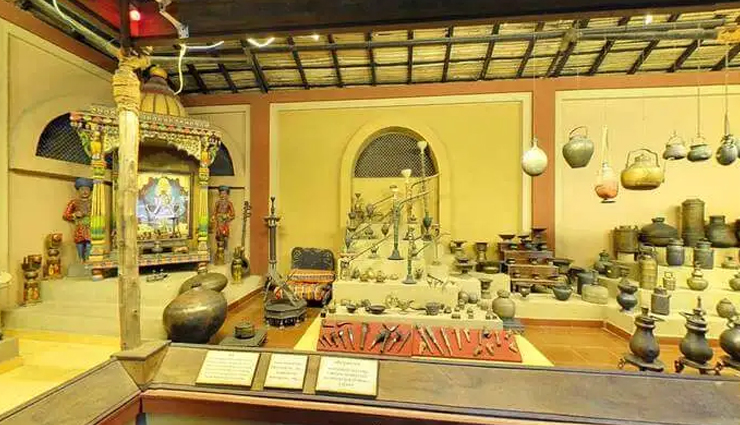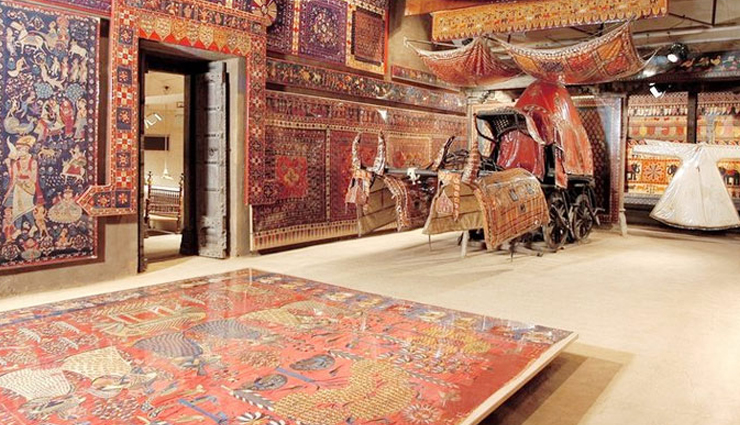
In this exploration, we invite you to embark on a fascinating journey through the museums of Ahmedabad. Step into the Sabarmati Ashram, where the echoes of India's freedom struggle still resonate, and delve into the life of the Father of the Nation. Immerse yourself in the intricate artistry of Gujarat's textiles at the Calico Museum, where centuries-old traditions come to life through vibrant fabrics and garments. Discover the rich folk heritage of the region at Shreyas Folk Museum, where colorful artifacts and musical instruments paint a vivid picture of Gujarat's cultural diversity.
Whether you're an art enthusiast, a history buff, or a curious traveler, Ahmedabad's museums offer a diverse range of experiences. From vintage cars to contemporary art, these cultural havens promise an enriching and immersive encounter with the city's past and present. Join us as we unravel the stories, art, and heritage encapsulated within Ahmedabad's museums, inviting you to explore, learn, and be inspired.

If there are must-see Museums in Ahmedabad – it has to be the Calico Museum of Textiles. This museum takes you back to the textile history of the Indian subcontinent with meticulously preserved ancient textiles, some of which go back hundreds of years. History of textiles is closely associated with the history of both Ahmedabad and Gujarat. What makes this museum unique is the way an old house has been conserved and used for museum displays. The whole ambiance just takes you back in time, as you go up and down in haphazard houses and see the finely carved woodwork all around. Textiles are handled with the utmost care and you are not allowed to go close to them, forget about touching them. The museum draws its inspiration from Ananda K Coomaraswamy – the noted art historian.
If you have an eye for vintage cars, World Vintage Car Museum is a go-to place for you in Ahmedabad. The museum showcases the car collections of Pranlal Bhagilal Patel and family. Our guide in a lighter vein said, when Sardar Patel was uniting India by bringing these kingdoms together, this Patel went around buying their cars. The oldest car here is a 1906 Minerva and youngest is the 1972 Lincoln. A fair share of these cars come from erstwhile royal families of pre-independent India and the curator has smartly put red boards to announce which car was acquired from which kingdom. On my tour, I could spot vintage cars from Mysore, Indore, Jaipur, Baroda, Jamnagar, Jhansi, Chettinad, and Hyderabad. Another gallery – and gallery here means an open-air covered garage like space – has American cars, followed by one on British cars.
This quaint museum is located on the campus of L D Institute of Indology in Navrangpura near Gujarat University. It is a traditional museum with a collection of Indian sculptures, manuscript paintings, miniature paintings and drawings, woodcarving pieces, ancient coins, and some exquisite beadwork. The collections belong to Seth Kasturbhai Lalbhai and were opened to the public in the shape of this museum in 1984.
Some of the exclusive collections here involve painted manuscripts, mostly belonging to the early Jain literature. The beadwork panels are also very local and are not seen in many places across the country. N C Mehta Gallery of Miniature paintings is a part of this museum too. You can see folios of Gita Govinda, Kalpasutra, and scenes of various royal palaces.
Come Sankranti festival, in the middle of January and Ahmedabad skies, are full of colorful kites. If you cannot be there in January, the next best thing to do is to visit the Kite Museum and see the scenes of that celebration and also understand the historical relevance of kites in the life of an Ahmedabadi. Kite Museum is a rather small museum located in the Sanskar Bhavan that was also designed by Le Corbusier who is better known for designing the city of Chandigarh.
This is a museum I discovered by chance when I was waiting for the tour to begin at Calico Museum. This fort like a building is dedicated to the memory of Ahmedabad’s favorite son Sardar Vallabhbhai Patel. It documents his life and times through neatly designed displays. A lot of his personal belongings can be seen along with a depiction of all the houses he ever lived in. Photographs, of course, re-create the era of the freedom struggle.
A maze-like building takes you through a basement that is created like a jail with dioramas of Indian leaders inside the jail to remind you of the kind of life they led to give us freedom. It is one of the better-documented and displayed museums of modern India.
Anyone who goes to Ahmedabad gets a recommendation to visit Vishalla for that authentic Gujarati thali served in the traditional way where you have to sit on the ground in front of a wooden chowki. A part of the Vishalla complex showcases the collection of traditional utensils by Mr. Surendra Patel under the guidance of Art Historian Jyotindra Jain. The museum itself is a mud structure.
Displayed on a tiered structure these utensils are a part of the cultural heritage of Gujarat. When you go around this museum, look at the material used to build them. The size of utensils to understand how many people would have been fed with the food cooked in them, the shapes to fit the oven of the yesteryears. Finally, look at the artwork that each of them carries making each piece unique even when it is a part of the ensemble. There are more than 3000 utensils of different kinds on display. The design of display space impressed me as much as the displays did.